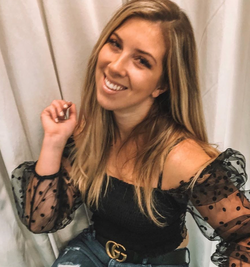Everyday she's hustling:
The labor employed to succeed in an Instafame-obsessed society
For the purposes of this study a semi-structured interview method combined with a short preliminary survey was chosen to be the most effective in order to measure an influencer's hustling against her prior economic and social capital.
The questions utilized in the interview inquired about the participants living situation, financial stability, photographic equipment, and personal appearance-based purchases that are intended to get at the participant’s economic capital. These types of questions are asked because there are multiple ways to view a person’s economic status such as where they live, what they own, and what they repeatedly choose to spend their money on. Through the interview process the researcher was better able to adjust interview questions and probes to elicit more information or emphasize certain questions in order to get more insight into topics mentioned in the previous interviews.
 |  |
|---|---|
 |  |
 |  |
 |  |
 |

***Not Exclusive to Just Instagram
Influencer's Average Annual Income
The preliminary survey was used as a tool to compile demographic inquiries, such as age, education, primary income source, salary, and years of experience.Through the preliminary survey it was revealed that 44.4%, or four of the nine influencers, made $70,000 or above annually, however, only one of them stated Instagram as their primary source of income. Two of the influencers did select not to state their salary range. Although out of the nine influencers, three of them put Instagram as their primary source of income.
In order to find participants for this study the process began by searching the internet for lists of current popular fashion and lifestyle influencers in and around the Boston area, however it became apparent that in order to procure interviews the geographic parameters would have to be adjusted to influencers within the United States. This meant that a majority of the interviews would be conducted over the phone. A total of over 100 influencers were reached out to via both Instagram direct message and emailing. The technique morphed into a digital version of a snowball sampling method where once an influencer was found and messaged, the same influencer’s Instagram feed would be scoured for any posts with friends or influencer connections who could potentially be contacted as well.
Originally the goal was to reach out to influencers with followings above 10,000, however after a difficult time getting responses in the beginning it was decided to reach out to influencers with 5,000 followers and above. Although in the end 2/3 of the influencers had followings above 10,000, while 1/3 had followings ranging from around 5,900 to 8,700.

After the interviews were transcribed, the transcriptions were then read through twice and themes were highlighted by color which allowed the researcher to view emerging patterns between the interviews. The interview questions themselves were categorized into sections useful to the interviewer in order to help categorize the data. The sections were comprised of “Hustling,” “Economic Capital,” and “Social Capital.” See the picture to the left for an example of some of the social capital questions and how the instrument was set up prior to the interview process.
To view the full methodology, click here. To continue on to the findings, click the arrow to the right.